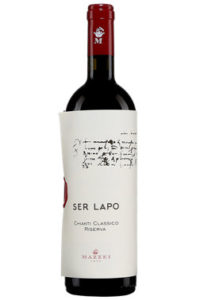 For those who prefer their wine to be experiential, here’s a cool Italian bottle to share with friends: Mazzei Ser Lapo Riserva Chianti Classico 2015. A year ago, the Tuscan winery began shipping bottles of this excellent Chianti to retail with a thick card stock that wraps over the actual bottle label. Similar to the bottle’s interior label, this extra wrap, affixed with a red wax seal, pays homage to the first recorded mention of Chianti wine with a faithful reproduction from a document penned in 1398 by the winery’s famed ancestor, Ser Lapo Mazzei (those ancient lines . Ser Lapo, a notary, writes, “By 16 December, 3 florins 26 dinars and 8 coins must be paid to Piero di Tino Riccio for 6 barrels of Chianti wine …. We shall pay this sum as evidenced by the letter of Ser Lapo Mazzei.”
For those who prefer their wine to be experiential, here’s a cool Italian bottle to share with friends: Mazzei Ser Lapo Riserva Chianti Classico 2015. A year ago, the Tuscan winery began shipping bottles of this excellent Chianti to retail with a thick card stock that wraps over the actual bottle label. Similar to the bottle’s interior label, this extra wrap, affixed with a red wax seal, pays homage to the first recorded mention of Chianti wine with a faithful reproduction from a document penned in 1398 by the winery’s famed ancestor, Ser Lapo Mazzei (those ancient lines . Ser Lapo, a notary, writes, “By 16 December, 3 florins 26 dinars and 8 coins must be paid to Piero di Tino Riccio for 6 barrels of Chianti wine …. We shall pay this sum as evidenced by the letter of Ser Lapo Mazzei.”
It is a notarial deed of sale and the first historical evidence of the use of the word “Chianti” with reference to a wine production region. Chianti eventually became the world’s first official wine appellation in 1716, when Grand Duke Cosimo III de’Medici demarcated the wine zone (now known as Chianti Classico) in the central Tuscany area sandwiched between the provinces of Siena and Florence.
The winery’s recent history is also to be admired. For years the Mazzei family has undertaken a program of sustainable management of their farming activity with the objective of guaranteeing the stability of the ecosystem and its biodiversity. This includes the complete elimination of weeding and chemical topdressing, as well as the recycling of production waste (shoots, grape stalks, olive pomace, horse manure, etc.) for the production of compost to be utilized as 100% organic fertilizer.
The biodiversity of the agro-ecosystem has been enhanced with plantings of field beans, common vetch, clovers, oats, barley, blue tansy, mustard, pasture hawksbeard, lupin, beans, peas and horseradish, which, after being sowed in alternating rows, are cut after germinating.
Particular attention is given to biological pest control with the use of helpful insects, especially with respect to fighting the vine moth, the region’s prime vine parasite.
In collaboration with a company that specializes in environmental evaluations and sustainability indicators, it was calculated that thanks to the winery’s surrounding ecosystems, including forests, vineyards, olive groves, forage crops, etc., the Mazzei at Fonterutoli estate has a carbon footprint (emission of greenhouse gases) of 731 tons, while absorbing the CO2 equivalent of 3,741 tons. Simply put, that means they’re actually absorbing five times more CO2 than they’re emitting.
And what of that unique bottle wrap, the inside of which features Renaissance illustrations from artist Paolo Fiumi? It’s much more than just a gimmick—for the quality of this Chianti Classico can market itself.
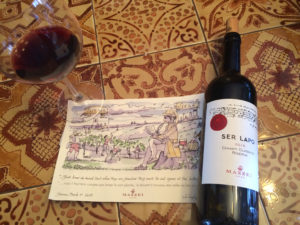
Here’s my review of the 2015 vintage, which has just hit LCBO store shelves.
Mazzei Ser Lapo Riserva Chianti Classico DOCG 2015 (Tuscany, Italy) ($23.95)
From an outstanding vintage, this 2015 edition of Ser Lapo—a blend of 90% Sangiovese and 10% Merlot—reveals an earthy strawberry/cranberry nose. There’s more red fruits on the tongue, but also a bracing grip of tannins from 12 months of aging in small French oak barrels (50% of which were new). The saliva-inducing acidity adds to the ageability factor—probably around a decade, although it should really begin to hit its stride in a few years. For now, it might need a food pairing to best appreciate it—perhaps something like pasta with game sauce, Mazzei recommends, as well as stews, grilled red meats and mid-aged cheeses. 90

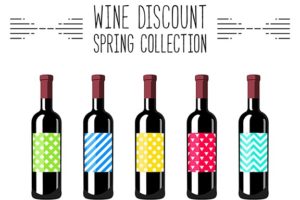
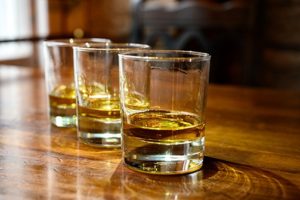
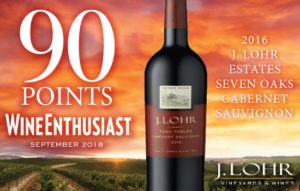
Leave a Reply
Your email is safe with us.